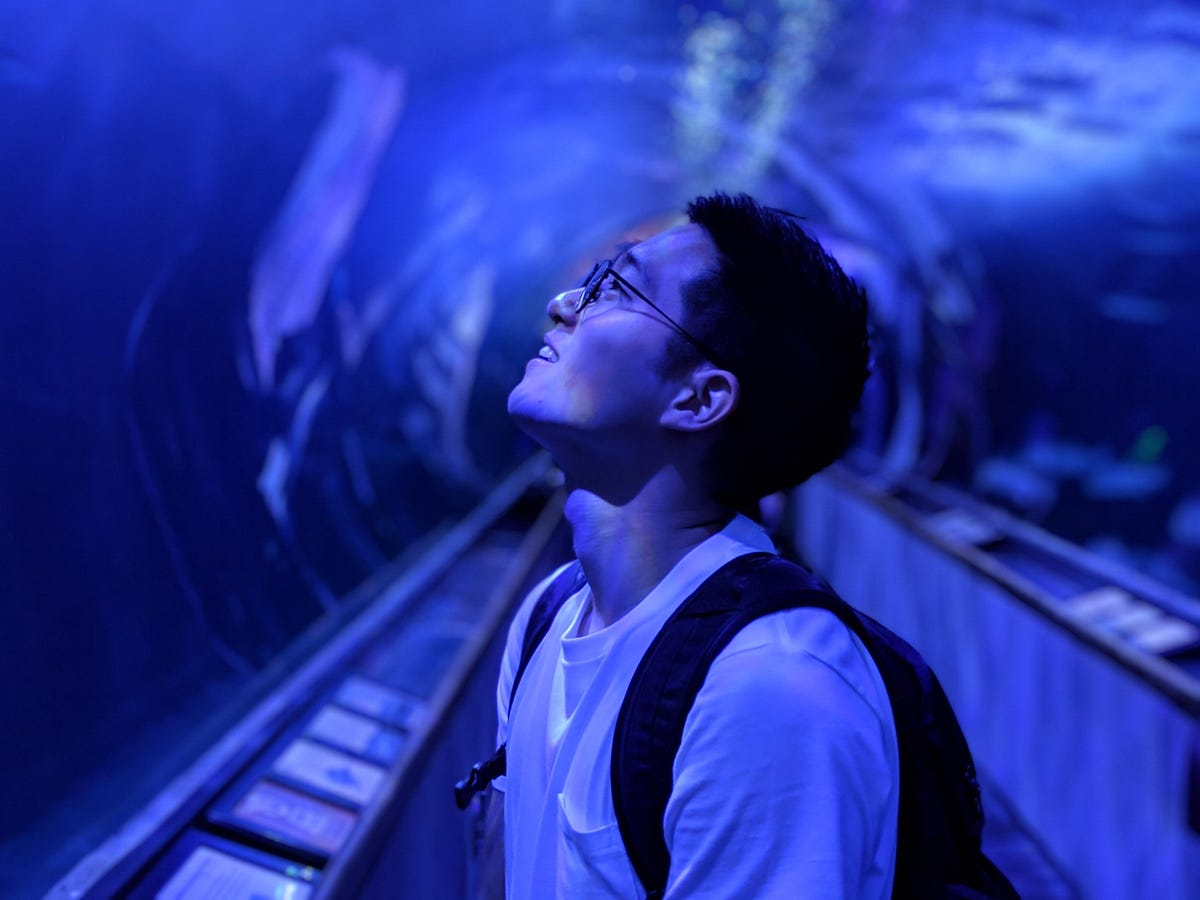
Pixel 3 portrait
Here's a portrait from the Pixel 3 to get us started. Both phones let you adjust the bokeh (or background blur) after the shot has been taken. I've left these images on default settings so you can see how each camera renders the blur.
iPhone XS portrait
The lighting in this aquarium is tricky, but perfect to show how each phone renders colors in portrait mode.
Outdoor shots (Pixel 3)
The Pixel 3 produces shots that are slightly more saturated in outdoor lighting situations than the iPhone XS (see next shot).
Outdoor shots (iPhone XS)
Thanks to Smart HDR, there's also a more even look of shadows and highlights.
Pixel 3 indoors
An indoor photo taken on the Pixel 3.
iPhone XS indoors
The same photo on the iPhone XS.
Portrait mode (Pixel 3)
Portrait mode on the Pixel 3 looks tack-sharp. But sometimes it just doesn't get the blur in the background right. Take for example the hair; you can see where the hair ends and where the blur begins. It's not a seamless transition as it is on the next photo.
Portrait mode (iPhone XS)
The blur on the XS, on the other hand, looks natural and falls off more evenly, just like it would if you took the photo using a DSLR.
More portraits (Pixel 3)
Pick a portrait between this slide and the next one.
More portraits (iPhone XS)
See which one you prefer.
Wide selfies (Pixel 3)
The Pixel 3 has two front-facing cameras. One is a wide-angle lens and the other is a normal field of view. Here's the normal selfie camera in action.
Wide selfies (Pixel 3)
Here's the wide lens that gets a lot more of the background in the photo.
Selfies (natural filter on Pixel 3)
The Pixel 3 has facial retouching modes active on the front camera (that you can also turn off). Here's the default "natural" setting.
Selfies (no filter on Pixel 3)
Here's without the filter. The photo looks oversharpened and not as flattering.
Selfies (soft filter on Pixel 3)
Here's one taken with the soft filter active. It looks really smooth.
Selfies (iPhone XS)
Here's the iPhone XS selfie (no beauty mode). The white balance is a little warmer so I think it looks more flattering than the previous selfies from the Pixel 3.
Flash (Pixel 3)
The Pixel 3 produces a great result with its built-in flash.
Flash (iPhone XS)
So does the iPhone. Which do you prefer?
Indoor and outdoor (Pixel 3)
Another shot where you can see how the Pixel 3 has slightly more color saturation than on the iPhone (next slide).
Indoor and outdoor (iPhone XS)
The iPhone XS has a slightly warmer white balance on this one, but colors don't look as saturated and more natural than the Pixel.
Low light (Pixel 3)
It's time to turn the lights down low and see what the Pixel 3's single-lens rear camera can do. A performer at the San Francisco Dungeon poses in front of a crystal ball. The Pixel 3's shot looks sharp and vibrant.
Low light (iPhone XS)
The iPhone XS is a little less saturated and has a touch more noise on the same low-light image.
The Scream (Pixel 3)
Another shot in extreme low light from the Pixel 3. This time you can really see the detail captured at a shutter speed of 1/15 second and ISO 5280.
The Scream (Pixel 3)
The iPhone uses a much slower exposure at 1/4 second and a lower ISO of 2500.


